J’ai eu l’honneur de participer cette année à l’Agile Tour Aix-Marseille (2016) en tant que speaker. Sans surprise, ce sont 2 sessions autour du Kanban que j’ai proposées :
- une de niveau débutant : le Ball Flow Game (Karl Scotland)
- une de niveau pratiquant : l’atelier Kanban values (Mike Burrows) – que j’avais présenté à Mix-IT quelques mois plus tôt
Par chance, elles ont toutes les deux été sélectionnées ! Une expérience donc très enrichissante pour moi et je l’espère pour les participants également ! Je vous décrirais dans cet article le Ball Flow Game auquel j’ai ajouté quelques modifications ! 😉
Bonne lecture !
Description
Après une période très Kanban Pizza Game, j’introduis maintenant souvent Kanban avec le Ball Flow Game. C’est un atelier que je trouve fun, puissant et simple à mettre en oeuvre ! En réalité, c’est une variante du Ball Point Game dans laquelle on a injecté la notion de flux. Je souhaitais lui ajouter une partie permettant de structurer l’amélioration continue par les hypothèses. Je décrirais ici le cadre de l’atelier sans rentrer dans les détails des résultats obtenus pendant la session.
Si cela vous intéresse, vous pourrez trouver les instructions du Ball Flow Game original ici avec le document associé ici.
Matériel et préparation
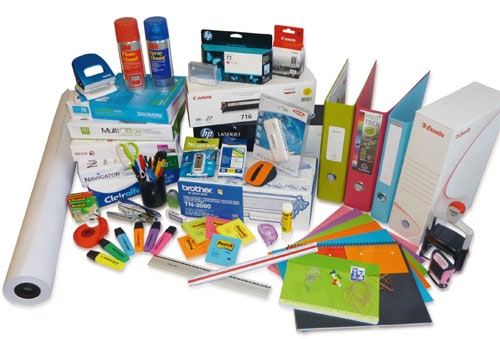
- Set de 20 balles (j’utilise des balles de même couleur pour pouvoir introduire une typologie différente de balle si besoin mais ce n’est pas obligatoire)
- Chronomètre / Feuille excel Ball Flow Game
- Scotch de peintre
- Marqueurs
- Feuilles A4
- Impression de carte de tests
- 2 sacs (pour les balles)
Je prépare en amont sur un mur le tableau d’amélioration continue suivant (inspiré de PopcornFlow) :
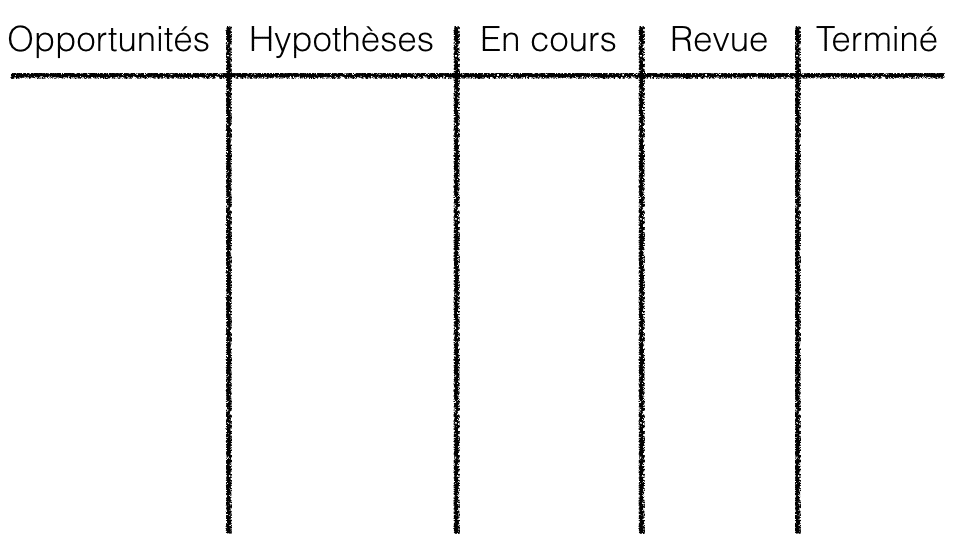
Rappel des règles
A la différence du Ball Point Game, l’objectif des participants est de compléter un set de 20 balles le plus vite possible (au lieu d’un maximum pendant 2mn).
On mesurera alors le temps global ainsi que le temps moyen de traitement d’une balle.
Les contraintes restent cependant les mêmes :
- Il n’y a qu’une seule grande équipe
- Les balles doivent avoir un temps aérien entre les personnes : pas de passage direct de main en main
- Tout le monde doit toucher la balle une fois pour la considérer traitée
- Pas de passes à son voisin direct : on parle surtout des voisins sur sa gauche et sur sa droite
- Le point d’entrée est également le point de sortie : la personne qui introduit les balles dans le système est celle qui doit les récupérer à la fin – l’utilisation de 2 sacs est donc recommandée
Note : On me demande souvent si on peut toucher plusieurs fois les balles. Ma réponse est simple : « Oui vous pouvez. Maintenant je rappelle que l’objectif est de compléter le set de balles le plus rapidement possible donc le fait de les toucher plusieurs fois risque d’influer sur votre temps de traitement global. »
Dans le cadre initial, les participants effectuent 5 itérations avec des moments courts d’amélioration continue. C’est là que j’ai souhaité apporter une variante. Au lieu de prendre des actions d’amélioration à la va vite, les participants vont devoir sélectionner leurs expérimentations à partir d’hypothèses : une manière de mieux structurer l’amélioration continue de l’équipe.
N’ayant jamais testé l’atelier auparavant, il était difficile de savoir si nous aurions le temps de faire 5 itérations, mais nous en ferons autant que possible en tout cas ! 😉
Début de l’activité
Après avoir présenté le cadre de l’activité, l’objectif et les contraintes :
- je demande aux participants un(e) volontaire pour jouer le rôle de PO (l’entrée et la sortie du système ! ;-))
- je leur impose une disposition pour la première itération : former 2 lignes, les uns en face des autres.
- je lance l’itération
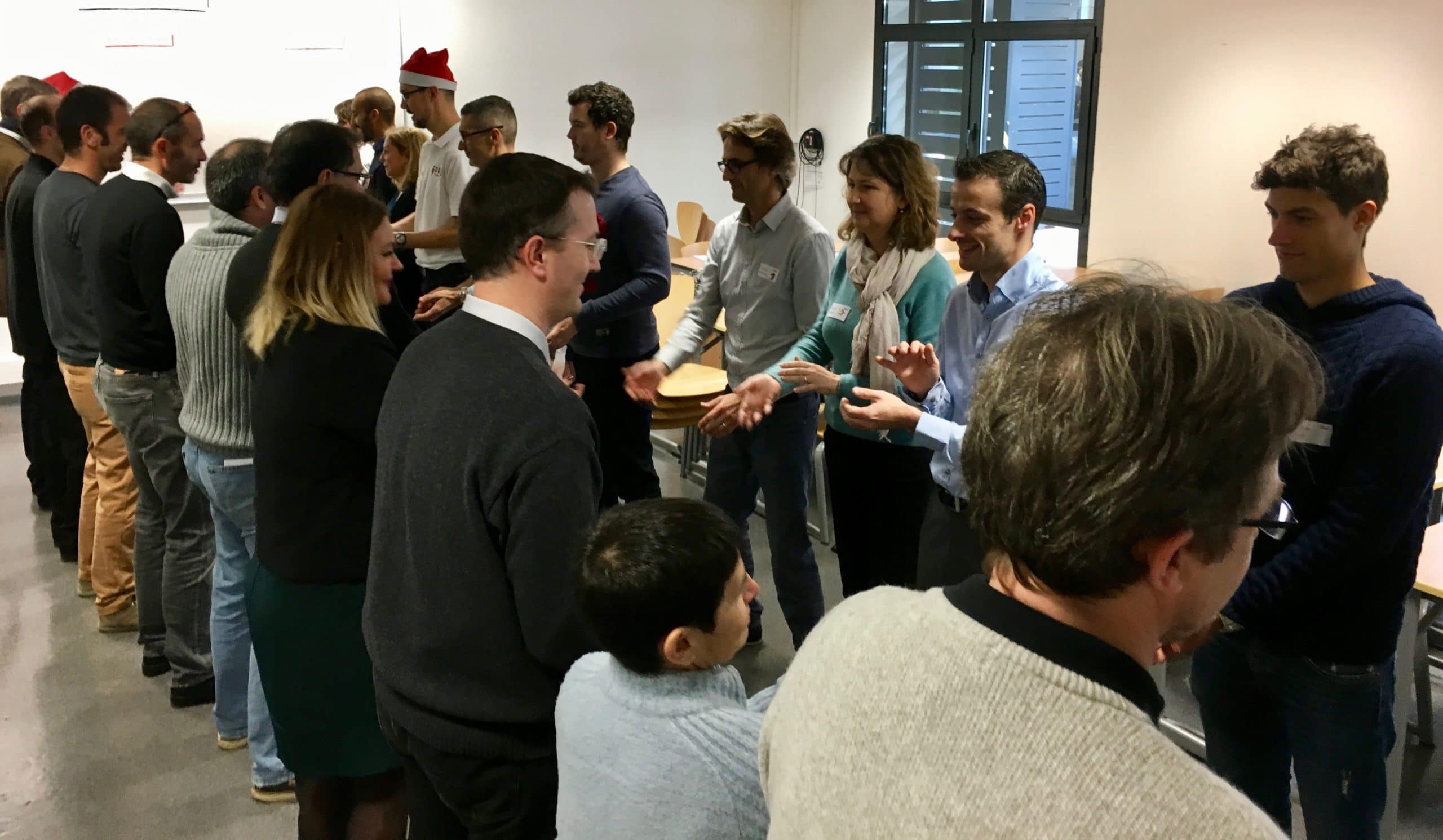
Après avoir traité les 20 balles, j’inscris les résultats des mesures sur un tableau à la vue de tous et j’explique la phase suivante : la structuration d’expérimentations.
Exemple
Rien de mieux qu’un exemple pour pouvoir aider les participants à rentrer dans le processus.
Je me place devant le tableau d’amélioration continue au niveau des Opportunités et je demande au groupe sur quels points ils pourraient s’améliorer :
- Vitesse de transmission
- Nombre de balles tombées
- Distance de transmission
- Structure organisationnelle du groupe
- Gestion de la sortie des éléments (PO)
- …
J’inscris chaque élément sur des post-its que je colle dans la colonne.
Je leur demande ensuite quel serait l’élément le plus simple à mettre en oeuvre et facilement vérifiable ? Dit autrement, celui qui induirait le moins de perturbation par rapport au mode de fonctionnement actuel. Partons sur la Distance de transmission.
On se lance dans la rédaction de l’expérimentation à l’aide de la carte de test (issues de Strategizer):

Nous croyons que réduire la distance entre nous réduira le nombre de balles perdues et donc notre temps de traitement
Pour le vérifier, nous allons nous rapprocher à distance de bras
Et mesurerons le temps de traitement global et le nombre de balles perdues
Nous aurons raison si le temps mesuré est inférieur au temps précédent et que le nombre de balles tombées est inférieur à 2
On la déplace vers la colonne En cours et on lance l’itération suivante en prenant en compte les changements associés.
Après l’itération, on passe la carte de test en revue et l’on valide les résultats : généralement cette expérimentation fonctionne ! 😉
Au tour des participants
J’invite les participants à former des sous-groupes pour remplir des cartes de test :
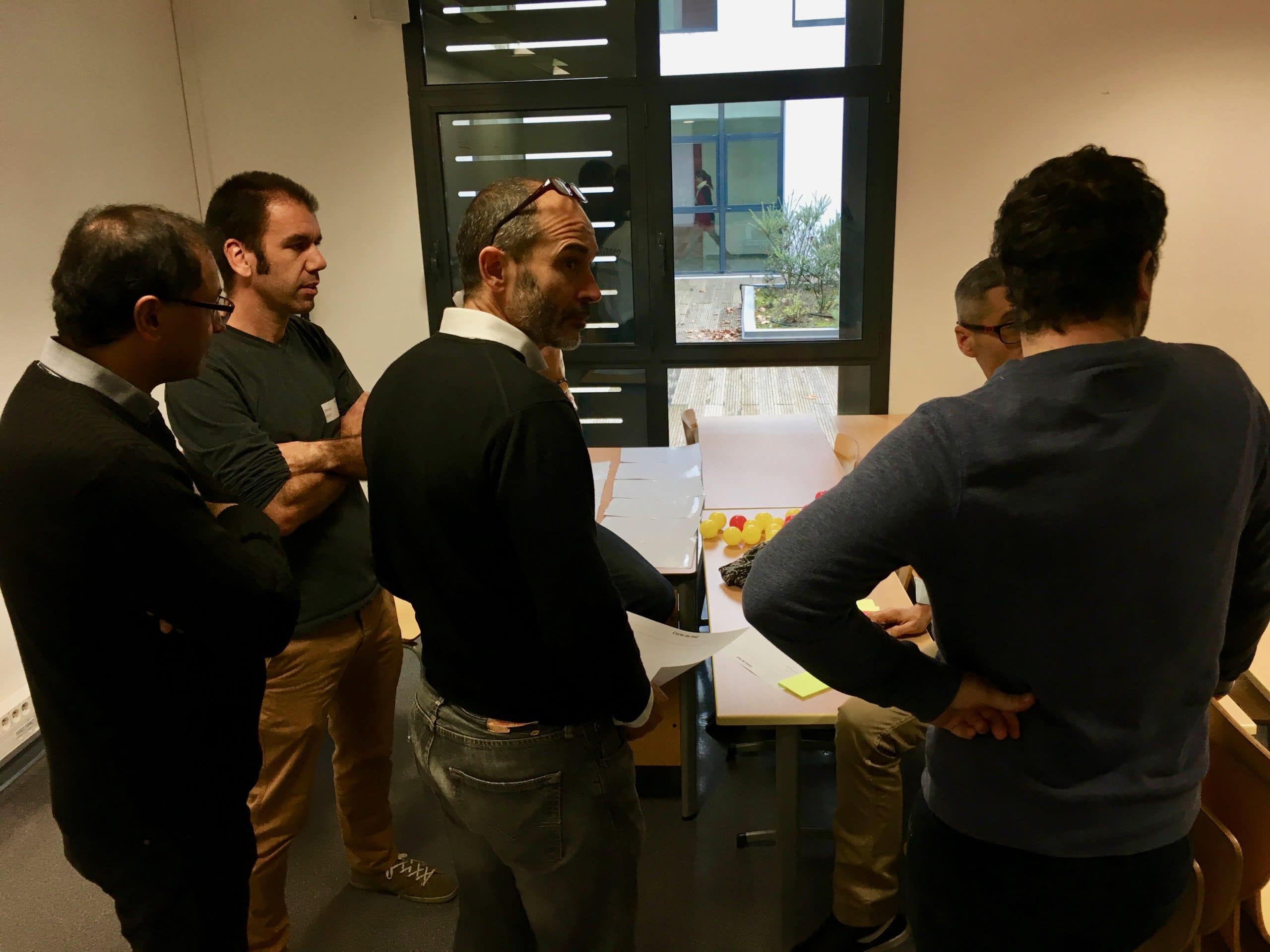
Après quelques minutes, on réunit toutes les cartes de test au niveau de la colonne Hypothèses et chaque groupe vient présenter ses propositions. Les échanges sont ici importants : ils permettent à chacun de voir qu’une proposition semblant évidente aux premiers abords peut finalement être challengée lorsqu’elle est confrontée à d’autres perspectives.
Il est important de garder toutes les propositions, même celles qui ne sont pas tout de suite sélectionnées : elles pourraient devenir pertinentes par la suite.
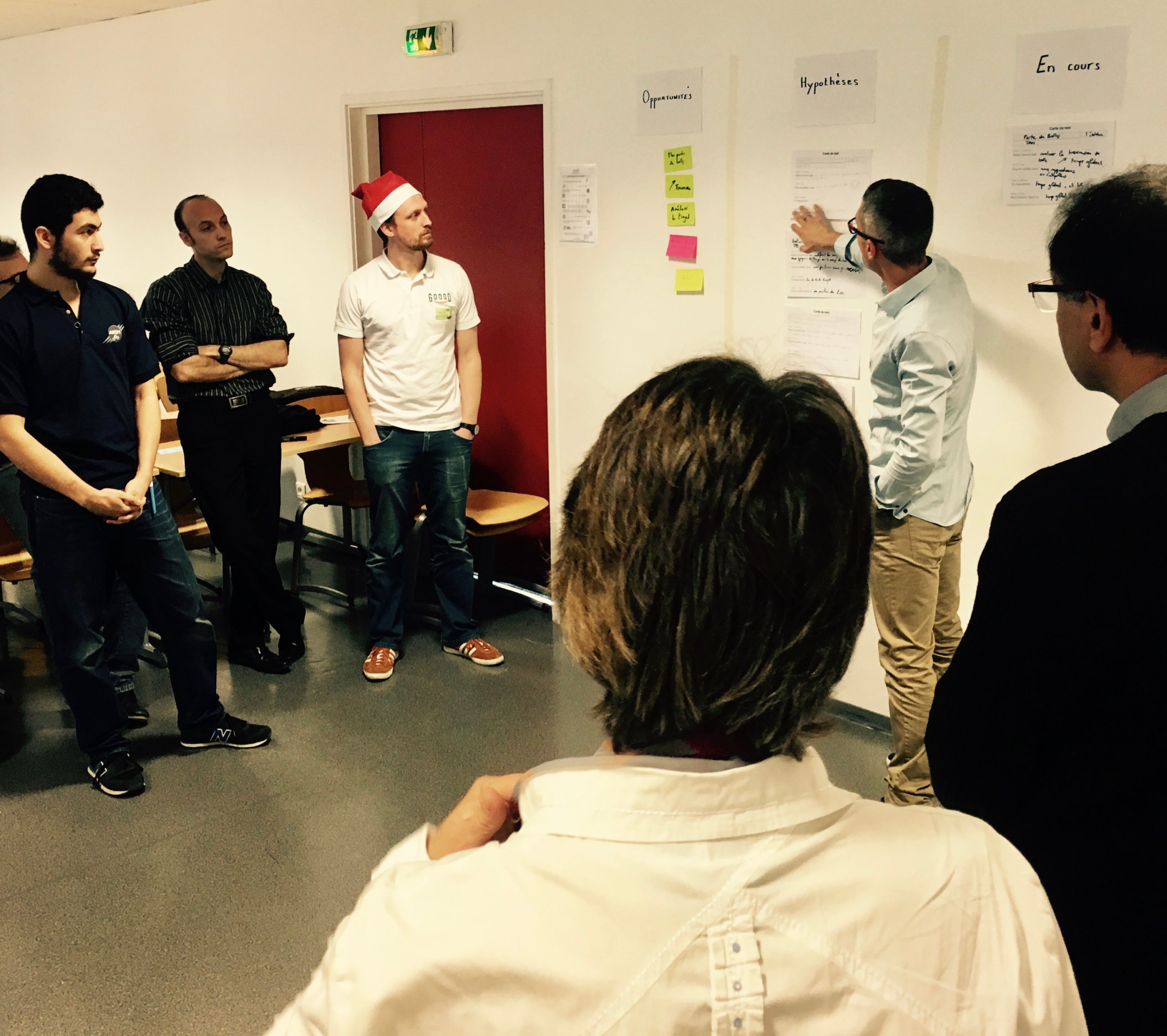
Il arrive souvent d’avoir des propositions de modifications structurelles de l’organisation du groupe. J’insiste alors à sélectionner les propositions les plus simples à mettre en oeuvre et permettant de capitaliser sur les apprentissages de l’itération précédente. Malgré l’intérêt intrinsèque de ces propositions, elles sont de nature disruptive et engendrent beaucoup de changements en même temps ce qui rend difficile la capitalisation.
N’avez-vous jamais rencontré des programmes d’amélioration qui changeaient tout plutôt que de faire évoluer l’existant ? Comment l’avez-vous vécu ? 😉
Note : Pour tempérer ce sujet, il est important de savoir qu’un système possède une limite intrinsèque d’optimisation. Si l’on veut dépasser ce plafond, un changement de structure peut à ce moment là nous y aider.
Le processus bien compris par les participants, il suffit simplement de réitérer les itérations de jeu et d’amélioration continue.
Quelques idées supplémentaires
Si vous avez le temps, vous pouvez faire expérimenter les cas suivants aux participants et discuter de l’impact sur le Lead Time :
- Limitation du travail en cours – Si cela n’émerge pas du groupe naturellement, ne faire passer qu’une seule balle et mesurer le temps
- Classes de service – Introduction ponctuelle de balles de type « urgente » dans le système : elles doivent avoir un Lead Time plus court que les balles « standard » et sont introduites de manière arbitraire dans le système. Vu que j’utilise le fichier excel n’effectuant des mesures que pour 20 balles, je remplace quelques balles originales par un nombre équivalent de balles rouges pour garder le bon compte.
- Variabilité des éléments de travail – Tout en gardant le compte de 20, faites traiter des objets divers comme des bouteilles d’eau, des écharpes, des stylos, des Post-it, des carnets…en plus des balles. Cela permet de mettre en lumière l’adaptation continue nécessaire pour traiter une variabilité d’entrées forte.
Débriefing

Je rappelle que l’objectif de l’atelier était d’introduire Kanban par la pratique. C’est donc l’occasion de faire prendre de la hauteur aux participants en leur partageant la théorie associée.
Je leur présente alors les 4 principes et 6 pratiques fondamentales de Kanban en leur demandant à chaque fois de faire le rapprochement avec un élément de l’atelier.
Les 4 principes fondateurs de Kanban
- Commencer là où on en est
- Le premier processus (volontairement imposé pour accélérer la mise en action) et la première mesure
- Convenir de poursuivre un changement incrémental et évolutionnaire
- Présentation du cadre de l’atelier avec les itérations
- Initialement, respecter les rôles, les responsabilités et les titres de poste
- Sélection du rôle de PO au début de l’atelier
- Les balles doivent passer par tout le monde ce qui signifie que chacun a un rôle implicite
- Encourager les actes de leadership à tous les niveaux
- Le changement piloté par les hypothèses était mené par l’ensemble des membres de l’équipe, répartis en groupe. Il n’y avait pas de commanditaire imposant les changements.
Les 6 pratiques fondamentales de Kanban
- Visualiser le flux
- Le flux est visible grâce aux balles
- Limiter le travail en cours
- La limitation du travail en cours est expérimentée au cours de l’atelier. Si elle ne vient pas du groupe lui-même, je l’invite à expérimenter le traitement d’une balle unique ce qui permet d’introduire la notion.
- Gérer le flux
- La mesure des différents temps au cours de l’atelier
- Rendre les règles du processus explicites
- Les moments d’amélioration continue entre les itérations permettent au groupe de définir un mode de fonctionnement explicite pour chacun
- Implémenter des boucles de feedback
- Les revues d’hypothèses correspondent à des boucles de feedback
- S’améliorer collaborativement, évoluer expérimentalement
- La construction d’expérimentations pilotées par les hypothèses est un travail collaboratif en sous-groupe
- L’adoption formelle du changement n’apparaît qu’après l’avoir validé expérimentalement
Conclusion
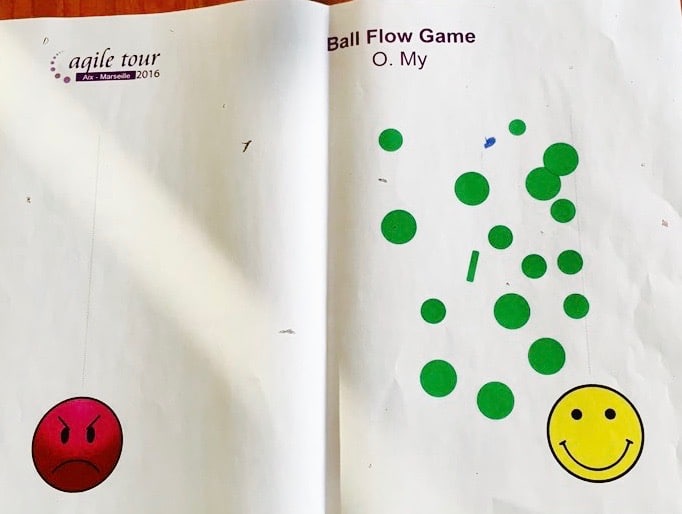
Je repars de cet événement avec de très bons souvenirs : une organisation au top, une journée fatigante mais très enrichissante ! Les échanges avec les participants ont été très intéressants et j’espère avoir pu associer l’utile et l’agréable dans le cadre de mes sessions autour du Kanban.
Le Ball Flow Game revisité semble en tout cas avoir fait bonne impression, je le retravaillerais probablement pour lui donner un peu plus de fluidité. Christophe Keromen m’a d’ailleurs suggéré d’utiliser un modèle (dont j’ai oublié le nom) décrivant différents espaces de changement – processus, personnes, structure et outils – ce qui permettrait de focaliser les participants d’abord sur des expérimentations liées au processus avant de s’attaquer à la structure.
Un grand merci à l’équipe d’organisation pour m’avoir donné cette opportunité et bien évidemment à tous les participants qui ont dû me supporter pendant une, voire même 2 sessions ! 🙂
A l’année prochaine ? 😉







